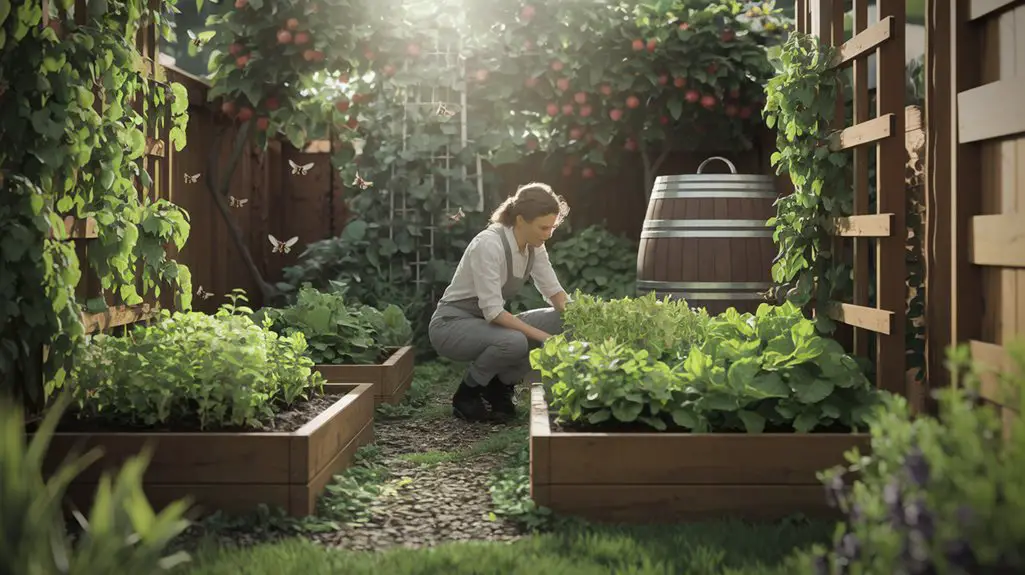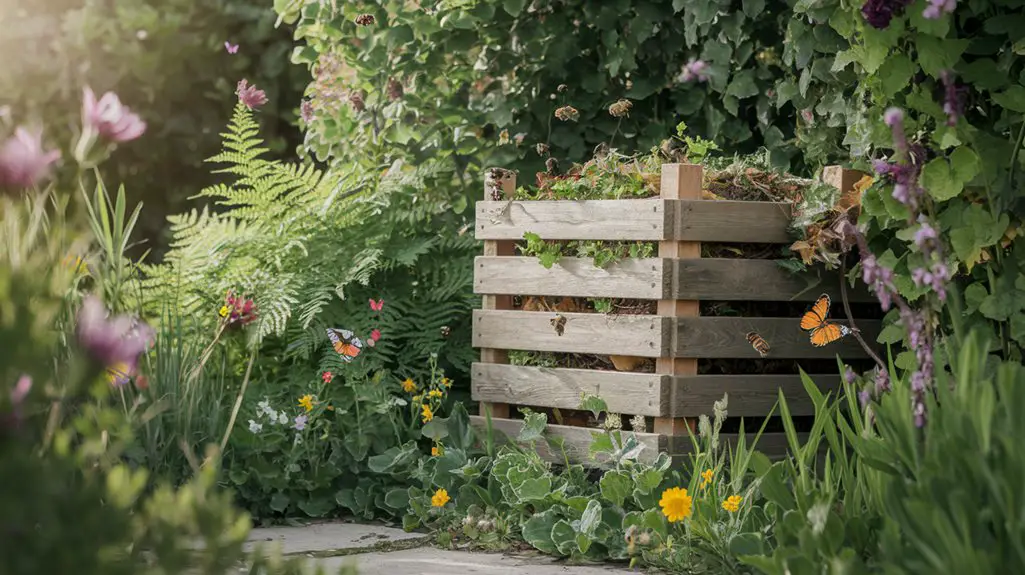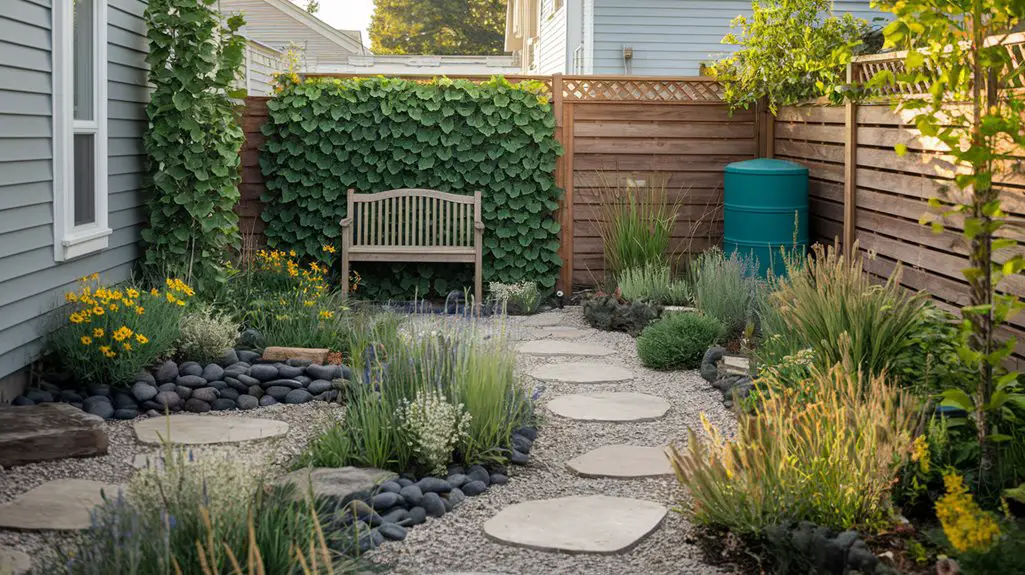Just as Eve discovered the abundance of Eden's garden, you too can create your own flourishing paradise through permaculture principles. When you work with nature instead of against it, your garden becomes a self-sustaining ecosystem that requires less work while yielding more food. The journey begins with understanding your unique landscape and ends with a productive system that regenerates itself. Ready to transform your yard into an edible oasis that benefits both you and the planet?
Observe and Design Your Landscape First
Before you pick up a shovel or plant a single seed, take time to observe your landscape's natural patterns and features. Watch how water flows during rain, track sunlight patterns across seasons, and note existing plant communities.
This observation period reveals your land's unique characteristics and helps you work with nature rather than against it.
Sketch a base map of your property, marking water sources, structures, slopes, and microclimates.
Then overlay your design with zones radiating from your home—placing frequently visited elements like herbs closer than occasional ones like fruit trees.
Consider sectors too: where do winds, wildlife, or noise enter your space?
Build Rich, Living Soil Through Sheet Mulching
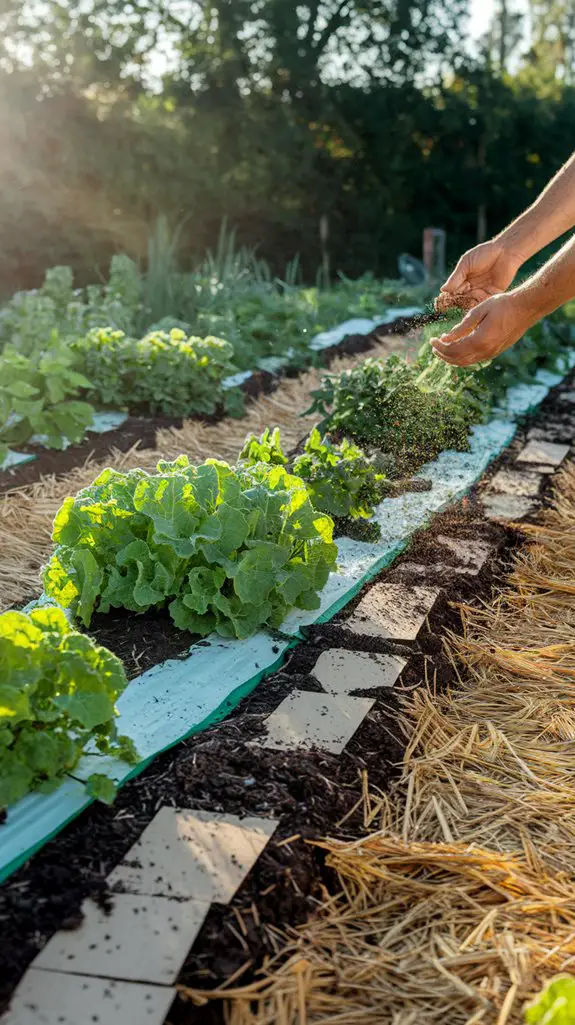
Although many gardeners till their soil, permaculture takes a gentler approach through sheet mulching—a no-dig method that builds soil fertility from the top down. This technique mimics forest floor processes where layers of organic matter decompose naturally over time.
To sheet mulch, start by laying down cardboard or newspaper to smother existing grass or weeds. Next, add alternating layers of nitrogen-rich materials (manure, kitchen scraps, fresh grass clippings) and carbon-rich materials (straw, leaves, wood chips). Aim for a total depth of 6-12 inches.
You'll create habitat for earthworms, beneficial fungi, and microorganisms that transform these materials into nutrient-dense soil. Water each layer as you build, and within 3-6 months, you'll have rich, living soil ready for planting—without disrupting the delicate soil food web.
Choose Plants That Work Together in Guilds
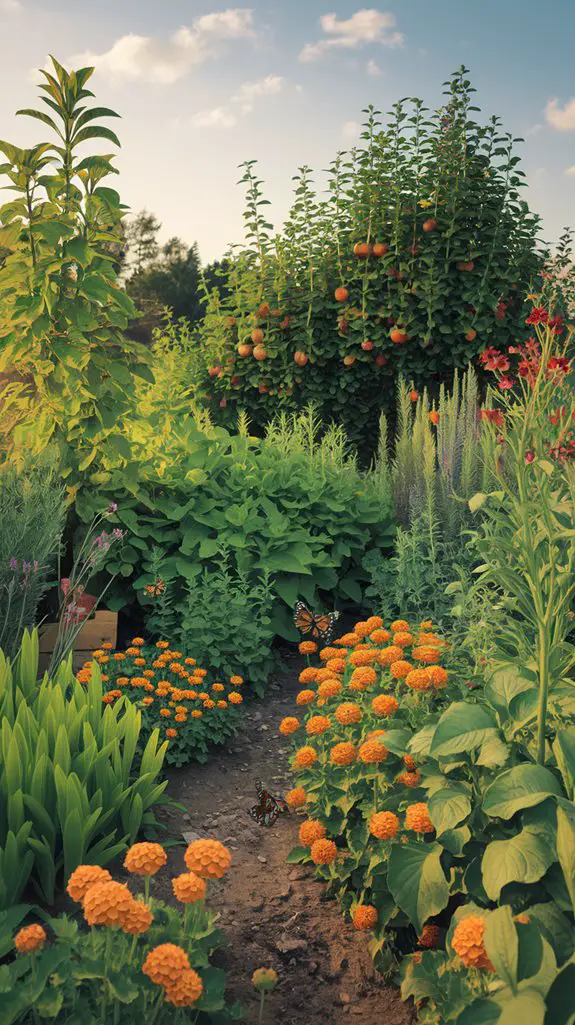
Plant guilds form the backbone of permaculture design, where species are strategically grouped to benefit each other while maximizing space and resources. When you're selecting plants for your guilds, consider the multiple functions each species provides—from nitrogen fixing to pest deterrence.
| Guild Member | Function | Example |
|---|---|---|
| Canopy | Provides shade/shelter | Fruit trees, nut trees |
| Mid-layer | Offers food/support | Berries, herbs, vines |
| Ground cover | Suppresses weeds/retains moisture | Clover, oregano, thyme |
Start small with a tree guild—plant a fruit tree surrounded by nitrogen fixers like clover, dynamic accumulators like comfrey, and aromatic pest confusers like mint or garlic. You'll notice fewer pest problems, improved soil fertility, and higher yields as these plant relationships mature into a self-sustaining system. Incorporating edible landscaping ideas can further enhance the productivity and aesthetic appeal of your permaculture garden.
Maximize Space With Vertical Gardening and Food Forests
When space constraints limit your growing area, vertical gardening and food forests offer elegant solutions that mimic nature's multi-layered design.
By thinking in three dimensions rather than just surface area, you'll dramatically increase yields while creating resilient ecosystems.
Food forests stack compatible plants in layers—from root crops and ground covers to shrubs, small trees, and canopy species. This creates a self-sustaining system where each plant performs multiple functions.
- Trellises and walls – Grow vining crops like beans, cucumbers, and grapes upward on structures built from bamboo, reclaimed wood, or metal.
- Hanging systems – Suspend containers for herbs, strawberries, or trailing plants.
- Living towers – Create vertical growing columns using stacked containers with herbs, greens, and flowers.
Incorporating vertical gardening techniques can further enhance the efficiency of your small yard by utilizing every available space.
Implement Water Conservation Systems
Water conservation forms the backbone of any successful permaculture garden, particularly as climate instability brings unpredictable rainfall patterns.
You'll need multiple strategies working together to maximize efficiency and resilience.
Start by installing rain barrels under downspouts to capture roof runoff. Connect these to simple gravity-fed drip irrigation systems that deliver water directly to plant roots.
Construct swales—shallow ditches on contour—to slow, spread, and sink rainwater into your landscape.
Apply thick mulch layers (4-6 inches) around plants to reduce evaporation and suppress thirsty weeds.
Choose drought-tolerant native species whenever possible, and group plants with similar water needs together in hydrozones.
Consider greywater systems that redirect household water from sinks and showers to your garden beds.
These integrated approaches create a self-regulating water cycle that mimics natural ecosystems. Additionally, implementing rainwater collection systems can significantly enhance your garden's resilience during dry spells.
Conclusion
You've now mastered permaculture basics—congratulations on joining the gardening elite! While your neighbors slave away fighting nature with chemicals and constant watering, you'll smugly watch your interconnected plant guilds thrive with minimal effort. Your water bill's plummeting, your soil's alive, and you're practically drowning in homegrown produce. Just don't get too self-righteous at neighborhood cookouts when explaining why your tomatoes taste better than everyone else's.

